Peru is much more than just Machu Picchu and other archaeological sites; it’s a country where its rich culture also shines through its internationally acclaimed exquisite cuisine. Have you ever wondered why Peruvian food has captivated taste buds around the world? It’s no surprise that it has won multiple World Travel Awards and that Lima is known as the gastronomic capital of Latin America. In this blog, I invite you to explore the secrets and traditions that make Peruvian gastronomy a true delight.
What is Peruvian food?
The history of Peruvian food is a blend of pre-Inca, colonial, and migratory influences. From ancient times, pre-Inca civilizations cultivated native crops like potatoes, corn, and quinoa, which remain staples in the Peruvian diet. The arrival of the Spanish in the 16th century brought new ingredients and techniques that blended with local traditions. Later, immigration from Africa, China, Japan, and Italy added even more diversity to the flavors and preparation methods.
Today, Lima holds the title of the gastronomic capital of Latin America, and the search for "best Peruvian food near me" has become increasingly popular on Google, demonstrating the growing global appreciation for Peru's delicious flavors.
Peruvian foods you must try
Ceviche
Peruvian food ceviche, an emblematic and internationally recognized dish, is a must-try if you visit the coast of Peru. Originating from the ancient Moche culture around 2,000 years ago, this delicious dish is prepared by marinating fish in lemon juice, spicy chili, and salt. It is served cold with lettuce salad, fresh onion, crunchy corn, and cochayuyo, a seaweed from the cold Peruvian coasts. Although there are regional variations, the unique flavor of Peruvian ceviche clearly distinguishes it from other versions in South America.
Lomo Saltado (Stir-Fried Beef)
Lomo Saltado is a dish that captures the essence of Peru with its perfect blend of Peruvian and Chinese flavors, known as Chifa. This delightful dish combines sliced beef steak, red onions, tomatoes, yellow bell peppers, and French fries, all stir-fried in a pan with oil, soy sauce, and minced garlic. What makes it unique is the technique of stir-frying the ingredients at high heat, sometimes flambéing right in the pan, creating a culinary show. Traditionally served with white rice and occasionally with a fried egg, Lomo Saltado is the best Peruvian food you must try.
Ají de Gallina (Creamy Chicken)
Ají de Gallina is a comforting Peruvian dish featuring tender shreds of chicken in a creamy yellow chili sauce. The sauce is enriched with nuts, cheese, and milk, resulting in a smooth texture and a distinctively mild spicy flavor. It is traditionally served over boiled potatoes and accompanied by white rice, garnished with black olives and a hard-boiled egg. This dish is a classic in Peruvian homes, ideal for those looking to experience the warmth of Peruvian family cooking.
Causa Rellena (Peruvian Potato Casserole)
Causa Peruvian food is a colorful and versatile dish from Peruvian cuisine. It starts with a base of yellow potato puree seasoned with lemon and yellow chili to give it a spicy and acidic touch. This base is layered with various fillings, including tuna, chicken, or seafood, along with avocado and mayonnaise. It is finally decorated with hard-boiled eggs, olives, and sometimes prawns.
Arroz con Pato (Rice with Duck)
Arroz con Pato is a flavorful Peruvian dish that perfectly blends the intense flavors of duck with rice. The duck, marinated in dark beer and spices, is slowly cooked until tender and juicy. It is then combined with rice cooked in the same broth from the duck, giving it a dark green color thanks to cilantro and other seasonings. This dish is typical of the northern region of Peru, especially popular in the city of Chiclayo, and is a favorite for lovers of rich and robust food.
Cuy (Guinea Pig)
Cuy, a beloved traditional dish in the mountains of Peru, might surprise those accustomed to seeing guinea pigs as pets. However, many farming families in the Peruvian mountains raise these animals and enjoy them on special occasions. Cuy can also be served fried or baked along with potatoes, accompanied by noodles. Rich in proteins and healthy fats, cuy also offers nutritional benefits. So, dare to try this exotic dish, one of the best Peruvian food—it might just delight you!
Read More | What is Cuy?
Pollo a la Brasa (Roasted Chicken)
Pollo a la Brasa, a delicious and trendy classic in Peru, is best enjoyed with french fries, salad, and an irresistible yellow chili sauce. The magic of this dish lies in its marinade, which includes soy sauce, garlic, pepper, and cumin, giving the chicken a smoky and deep flavor. Cooked over hot coals and served whole, this dish wins over palates not just in Peru but also abroad. Although typically found in chicken restaurants, you can replicate this tasty dish at home on the grill or in the oven.
Rocoto Relleno (Stuffed Spicy Peppers)
Ready to add a spicy kick to your menu? Rocoto Relleno is a standout dish in Peruvian cuisine known for its delightful heat. It features a rocoto, a type of red pepper with considerable spiciness, stuffed with a tasty mix of sautéed meat and Peruvian vegetables. It is then generously topped with melted cheese, perfectly balancing the pepper’s heat. Ideal for spice lovers.
Anticuchos (Grilled Heart)
Meat skewers, known in Peru as anticuchos, are a delicious and popular street food. Traditionally made with marinated beef hearts, they're also common today from more conventional cuts of beef or chicken. What makes anticuchos truly unique is their marinade, a rich blend of garlic, smoked panca chili, cumin, and sometimes lemon, giving them an unmistakable flavor. Served with a spicy sauce like rocoto, these anticuchos are a culinary experience you can’t miss.
Seco de Carne (Cilantro Beef Stew)
Seco de Carne is another of the best Peruvian foods you must try. This beloved stew is distinct from other beef stews with two unique ingredients: chicha de jora, a fermented corn drink used for centuries by the Andeans, and fresh cilantro. These components give it a tangy and refreshing flavor, unlike any other dish. Traditionally served with beans and white rice, Seco de Carne is always a favorite.
Pachamanca (Steamed Food Underground)
Pachamanca is typical Peruvian food from the Andes. This dish stands out for its variety of meats and vegetables, but it’s the spices and cooking methods that really make it unique. The meats and vegetables are marinated with Peruvian spices and local herbs such as huacatay. They are then cooked underground in an "earth oven," where stones are heated by fire and layered with the food. Everything is covered with a cloth, herbs, and soil to seal in the heat.
Extra Fact | Although you can simulate the flavor in a modern oven, experiencing the traditional Pachamanca in the mountains on the way to Salkantay or in the Sacred Valley is truly memorable.
Carapulcra (Spicy Chicken and Minced Pork Dressing)
Carapulcra is a Peruvian dish with roots in the Aymara culture of the Altiplano and the African influence from the southern coast of Peru. Originally called Qala Purka in Aymara, meaning "stew made on hot stones," this dish was a thick soup of alpaca meat and dried potatoes, cooked with hot stones to withstand the freezing of the highlands. During the colonial era, carapulcra made its way to the Chincha region on the coast, where enslaved Africans enhanced its flavor with ingredients like chicken, pork, yellow peppers, cloves, and garlic.
Chicharrón Peruvian Food (Fried Pork Rind)
Chicharrón is much more than just fried pork belly; it's a guilty pleasure of Peruvian food. Although not the healthiest dish, it is undoubtedly one of the most beloved among Peruvians. It is traditionally served with French fries, boiled corn kernels, and a fresh onion and mint salad, providing a perfect contrast to the rich pork flavor.
The preparation starts by marinating pork pieces in salt water for several hours to enhance their flavor. Then, these pieces are boiled until tender and finally fried in their fat until perfectly golden and crispy. This process not only intensifies the flavor but also ensures that the meat is tender inside and crunchy outside.
Papa a la Huancaína (Potatoes in Spicy Cheese Sauce)
Papa a la Huancaína is a delicious Peruvian appetizer, ideal for any celebration or as a tasty lunch throughout the year. This dish consists of soft-boiled potatoes bathed in a creamy huancaína sauce made from fresh cheese and yellow chili, giving it a distinctive spicy touch. It is elegantly presented on a bed of lettuce, adorned with olives and slices of hard-boiled egg, adding texture and flavor.
Estofado de Pollo (Chicken Stew)
Chicken stew is a famous and comforting dish in Peruvian cuisine, perfect for a family meal or a cold day. It combines pieces of chicken, preferably thighs or drumsticks, with carrots, peas, and potatoes. What really stands out is its tasty sauce, a rich combination of onions, garlic, panca chili paste, tomato paste, and a touch of red wine or beer that adds depth of flavor. It is served with rice, ideal for savoring every last drop of its delicious sauce.
Olluquito with Charqui
Olluquito with charqui is a typical Peruvian food that stands out for its fascinating mix of flavors and textures. This dish uses olluco, an Andean tuber with a crunchy texture and slightly sweet flavor, similar to jicama. It is masterfully combined with charqui, dried alpaca or llama meat, creating a unique contrast. It is seasoned with yellow chili, giving it a spicy and warm touch.
Arroz con Mariscos (Seafood Paella)
Arroz con mariscos is an exquisite Peruvian cuisine that goes beyond simple description. Similar to Spanish paella, this dish is a true explosion of flavors, perfectly blending two of Peru's great passions: rice and seafood. The rice, seasoned and mixed with peas, carrots, and red peppers, enhances the flavors of the sea, and a sprinkle of Parmesan cheese added at the end gives a final touch of flavor.
Chiriuchu Peruvian Food
Chiriuchu, considered one of the most emblematic dishes of Cusco and recognized throughout Peru, is authentic Peruvian food. This dish combines ingredients from the coast, highlands, and jungle, reflecting its origin in the Inca community traditions. In Quechua, Chiriuchu means "cold spicy." It mixes cooked seaweed, fish roe, chicken, dried meat, and blood sausage, along with guinea pig, potatoes, and toasted corn. It is served cold, garnished with cheese and chili.
Read More | Corpus Christi in Cusco.
Juane & Tacacho (Baked Banana Dough)
Juane and Tacacho are two traditional dishes from the Peruvian jungle. Juane consists of rice, chicken meat, and spices wrapped in bijao leaves and steamed until the flavors wonderfully merge. It is typically consumed during the San Juan festival. On the other hand, Tacacho is a mixture of fried and mashed green bananas mixed with pork cracklings, formed into balls, and served as a side or main dish, often with onion sauce and chili.
Arroz Chaufa (Chaufa Rice)
Since 1849, the arrival of Chinese immigrants in Peru introduced not only a new population but also a rich culinary tradition, merging with local cuisine to create chifa, a distinctive style of Peruvian Chinese food. An iconic dish of this fusion is Chaufa rice, a staple in all Chinese Peruvian restaurants in the country. This dish is traditionally made with leftover ingredients, stir-frying rice with green onions and ginger and seasoning it with soy sauce, oyster sauce, and sesame oil, often served with fried egg and pieces of chicken or meat.
Adobo (Spicy Marinated Pork Stew)
The Arequipa-style adobo is a typical Peruvian food many enjoy for Sunday breakfasts. This spicy pork stew is distinguished by its rich sauce made from panca chili and chicha de jora, among other spices, offering a unique and deep flavor. Although the term "adobo" is also used in other cuisines such as Filipino, Mexican, and Puerto Rican, each country adapts the dish to its local ingredients.
Solterito
Solterito is a delicious Peruvian side dish that blends the fresh flavors of the Andes. This salad includes broad beans, corn, tomatoes, onions, black olives, and fresh cheese, dressed with olive oil, red wine vinegar, lemon juice, salt, and pepper to highlight its natural flavors. Its versatility allows for the addition of ingredients like rocoto for a spicy kick. Colorful and eye-catching, it's perfect for a picnic or any outdoor meal.
Cau Cau (Cattle Tripe Stew)
Some believe the name comes from the Quechua "Acacau," meaning offal and spicy, while others suggest that 19th-century Chinese immigrants used "Caucau" to indicate that ingredients should be finely chopped. It might also derive from the Quechua "Kau-Kau," referring to an ancient dish with fish roe and seaweed. Cau Cau is a traditional dish that originated from African slaves in Peru, made with beef or chicken and white potatoes, chopped into squares, and cooked in a stew with garlic, onion, yellow chili, and parsley, and typically served with rice.
Arroz con Pollo (Rice with Chicken)
Similar to rice with duck, but this time with chicken. This dish is a rich Peruvian meal that, along with ceviche, could be considered one of Peru's most emblematic meals. Similar to Spanish paella in its preparation method, this dish stands out for its use of delicious local ingredients. It includes pieces of chicken cooked with carrots, peppers, and corn, all mixed into rice previously seasoned with cilantro, garlic, and peppers. Everything is cooked together for 30 minutes, and voilà! A flavorful dish is ready to enjoy.
Guiso de Tarwi (Tarwi Stew)
Tarwi, a legume native to the Peruvian Andes, is cultivated in high regions like Cusco, Cajamarca, Huánuco, Junín, and Puno. This superfood, valued since pre-Inca times by cultures such as Nazca and Tiahuanaco, is known for its high energy value. In Cusco, a landmark of its cultivation, tarwi is traditionally prepared by mixing it with cheese and milk to create a succulent and nutritious dish. It is seasoned with butter, cumin, and ground garlic, offering a unique and comforting flavor.
Peruvian Food Desserts
Picarones
These sweet rings made from squash and sweet potato dough are the Peruvian version of donuts. Fried until crispy on the outside and soft on the inside, they are soaked in chancaca honey for a sweet and aromatic finish.
Suspiro a la Limeña
A silky and sweet dessert from Lima. It combines a creamy base of condensed milk topped with fluffy meringue, typically sprinkled with cinnamon, for an enticing aroma.
Mazamorra Morada
Made from purple corn, this dessert has a pudding-like texture. It is cooked with fruits such as pineapple and plums, and thickened with chuño or sweet potato flour.
Arroz con Leche
This sweet comfort is made by cooking rice in milk until it becomes creamy and soft, then sweetened with sugar. Traditionally, it is flavored with cinnamon and lemon peel, giving it a distinctive aroma and flavor.
Turrón de Doña Pepa
A nougat loaded with history and flavor, made of layers of floury dough, anise, and various syrups, adorned with colorful sprinkles. Traditionally consumed during October, in religious celebrations.
Chocotejas
Small sweets from Ica, made of manjar blanco (sweetened condensed milk) covered with a thin layer of chocolate or fondant and filled with nuts such as pecans or guindones (dried plums), perfect for a quick but indulgent bite.
Features: Peruvian Food Recipe
- Diversity of Ingredients: Thanks to its vast biodiversity, Peru offers an impressive variety of ingredients, from over 3,000 types of potatoes to an extensive selection of corn, chili peppers, and exotic fruits.
- Cultural influences: Peruvian food is the result of a fusion between pre-Columbian indigenous culinary traditions, colonial Spanish cooking, and contributions from African, Italian, Chinese (chifa), and Japanese (nikkei) cuisines.
- Regional variety: Each region of Peru, from the coast to the highlands and the jungle, offers unique dishes that take advantage of local resources, such as coastal ceviche, highland cuy, and jungle juane.
- Use of chili peppers: Chili peppers are essential in Peruvian cuisine, adding spice, flavor, and color to many traditional dishes.
- Cooking techniques: Peru preserves ancient cooking techniques, such as wood-fired cooking using clay pots and Pachamanca, a pre-Columbian method where food is cooked underground with hot stones.
- Vegan options: Peruvian food has vegan options such as Papa a la Huancaína (without egg), Solterito, Quinoa Soup, Tallarines Verdes, Tacu Tau with sautéed vegetables, Choclo with Cheese, Causa (vegetarian filling).
Frequently Asked Question about Peruvian Food
What is Peruvian food like?
Peruvian food is varied and rich in flavors. It is known for its use of fresh ingredients like corn, chili peppers, and fish and for its blend of indigenous, Spanish, and Asian influences.
Where is Peruvian food from?
Peruvian food originates from Peru, a country in South America with a wide geographical diversity that includes the coast, the highlands, and the Amazon jungle.
Is Peruvian food the best in the world?
Many people consider Peruvian food among the best in the world due to its flavor diversity and international recognition, including multiple awards as the world's top culinary destination.
How to cook Peruvian food?
To cook Peruvian food, start by gathering fresh and authentic ingredients, learn about traditional techniques such as slow cooking and balanced use of spices, and don't hesitate to try recipes for typical Peruvian cuisines like ceviche or causa.
Is Peruvian food healthy?
Yes, Peruvian food can be very healthy. It uses an abundance of fresh and natural ingredients, including superfoods like quinoa, purple corn, and a variety of fruits and vegetables.
Is Peruvian food spicy?
Yes, many Peruvian recipes use chili peppers that provide a spicy touch, but there are also many mild options for those who prefer less heat.
Is ceviche Peruvian food?
Yes, ceviche is an iconic dish of Peruvian cuisine, famous for its freshness and unique flavor. It consists of raw fish marinated in lemon juice, chili, and seasonings.
So, why is Peruvian food so good?
The extraordinary quality of Peruvian cuisine reflects the heart and soul of its people, who are always ready to share their rich heritage with the world. Dive in and let yourself be enchanted by its flavors. Enjoy your meal!
How Peruvians eat?
- Lunch is the big meal. Look for a menú del día (set lunch).
- Eat Ceviche at midday, not late at night.
- Share plates and order sides (choclo, cancha) to try more flavors.
- Spice is not equal than heat: ask for ají on the side if you’re unsure.
- Bring cash for markets; debit/credit cards aren’t universal at stalls.
- Allergies? Confirm sauces; ají amarillo and huacatay hide in many dishes.
Where to try Peruvian food?
- Lima: Enjoy seafood for lunch in Miraflores/Barranco (markets and seafood restaurants). Nikkei cuisine (Peruvian-Japanese fusion) and Chifa (Peruvian-Chinese fusion) are available throughout the city.
- Cusco and the Sacred Valley: Restaurants specialize in Andean stews, Pachamanca experiences, and hearty soups in markets like San Pedro.
- Arequipa: Restaurants specialize in rocoto relleno, adobo, and picanterías for traditional midday meals.
When should I eat ceviche?
At lunch for peak freshness; Peruvians typically skip it at dinner.
Peruvian food blends Indigenous roots with Spanish, African, Chinese, and Japanese influences, fresh, colorful, and made to share. If ceviche, Lomo Saltado and Pachamanca sparked your appetite, that’s your sign to taste them in Peru. Come with curiosity and an empty belly; we’ll point you to local markets, classic spots, and new favorites. See you in Peru!

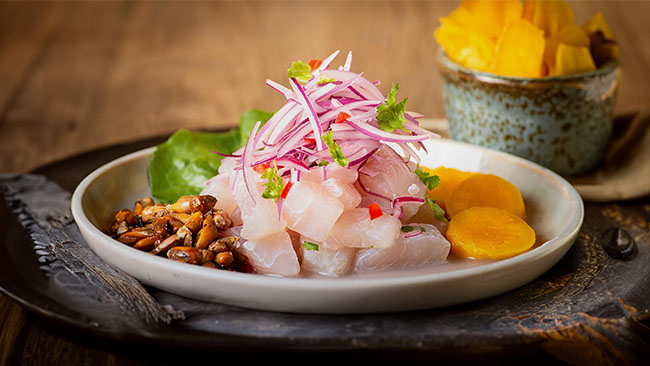
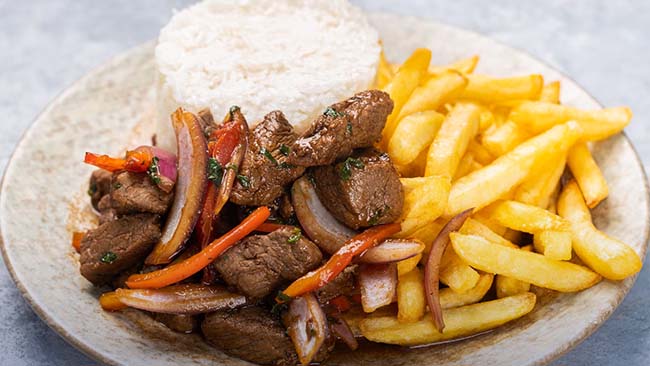
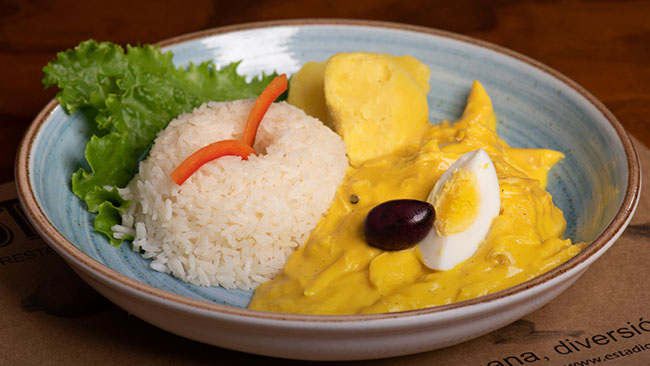
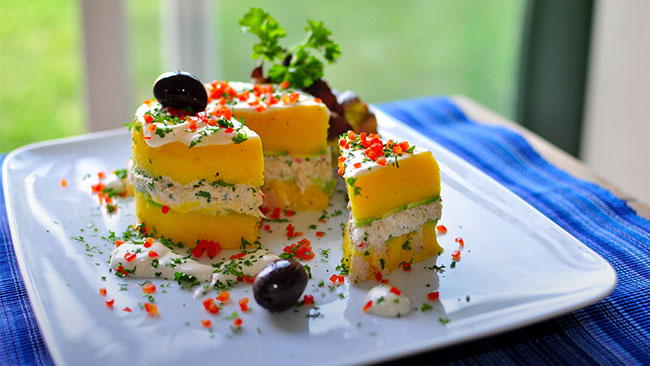
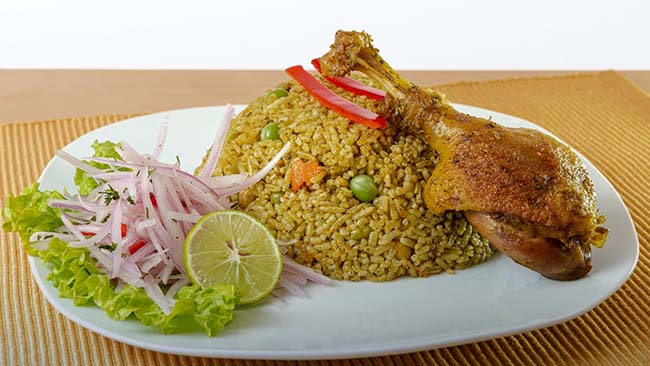
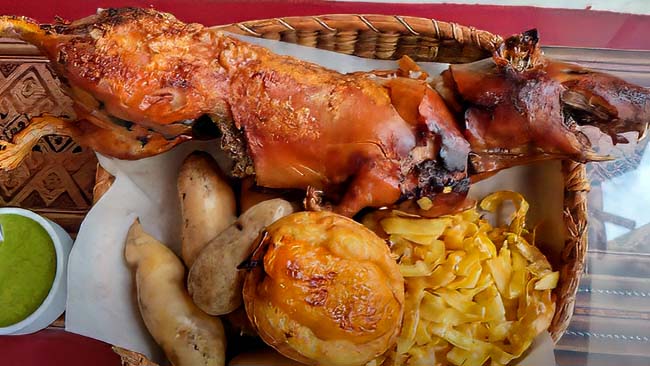
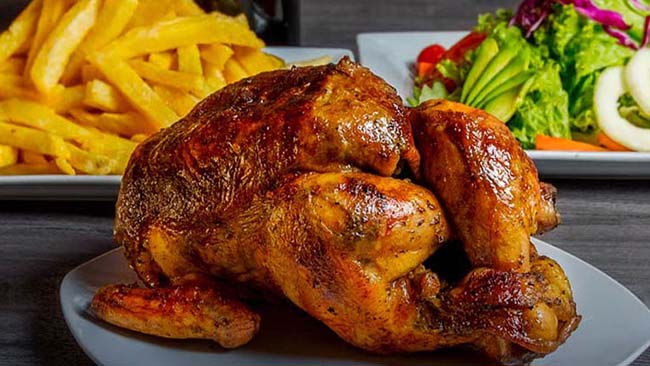
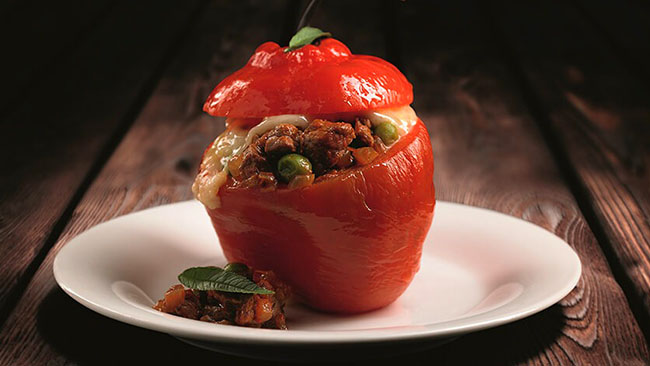
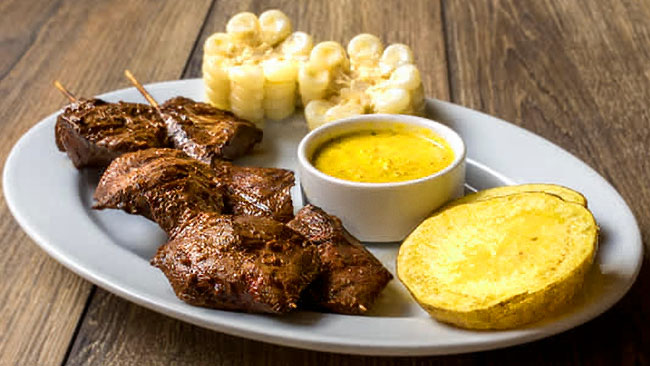
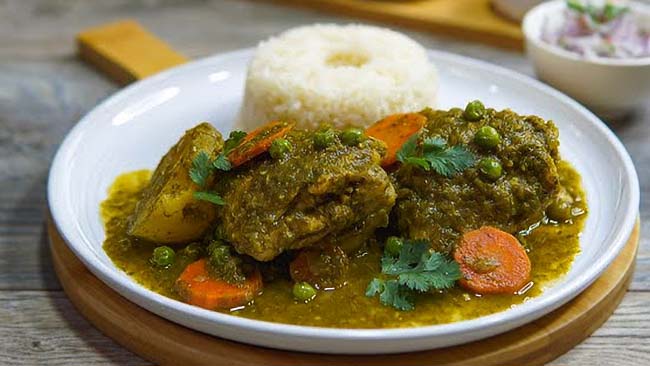
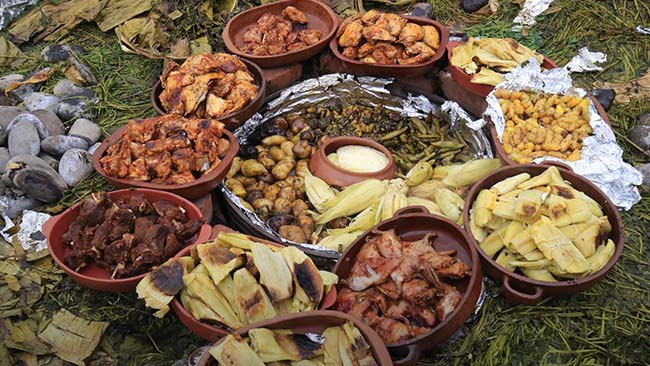
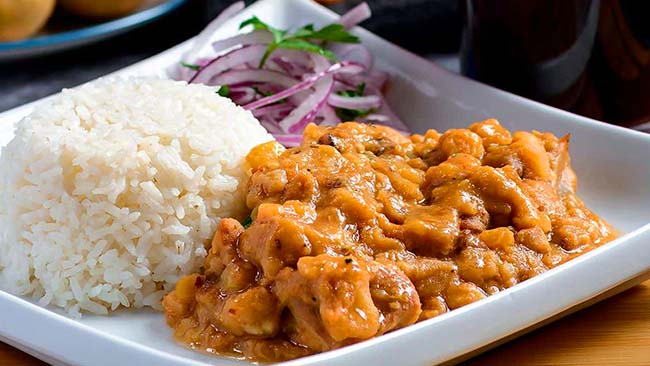
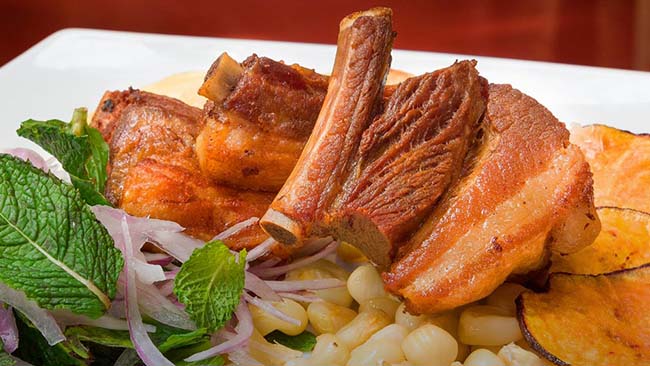
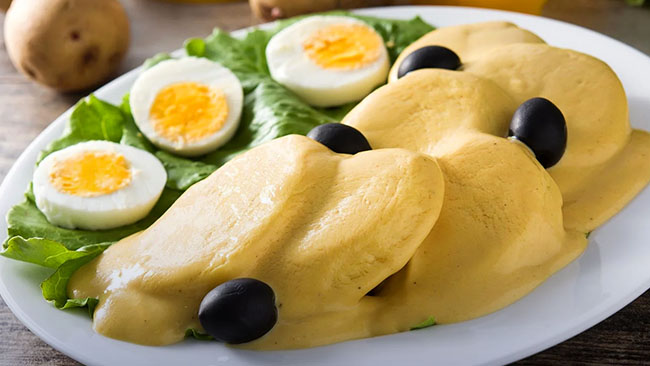
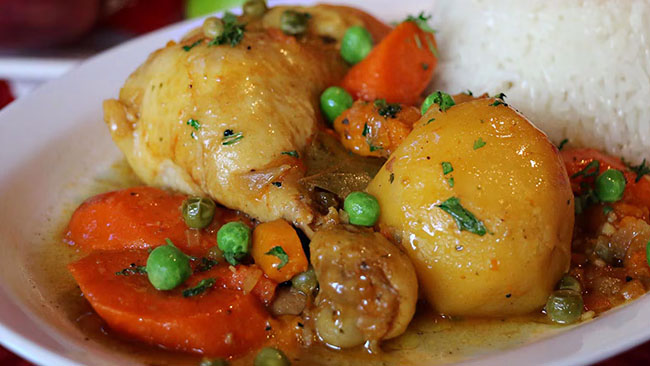
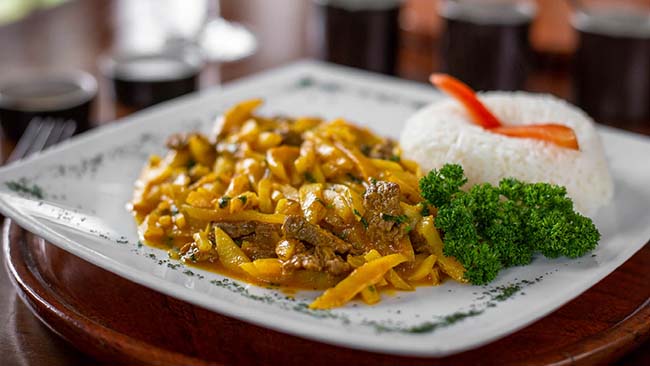
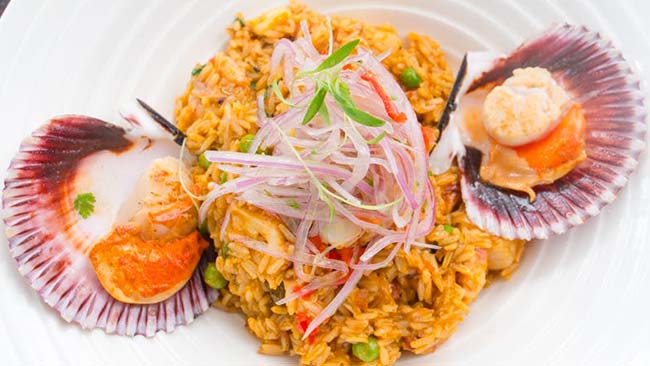
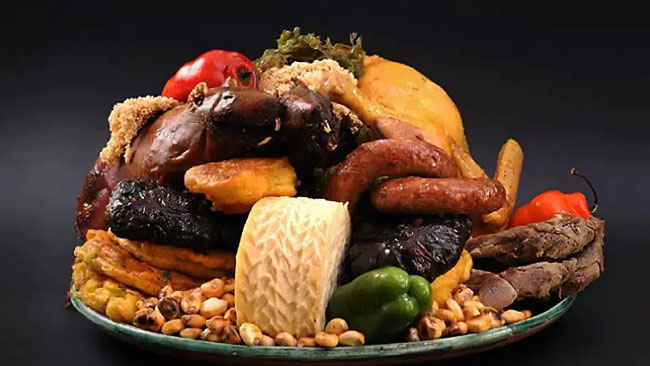
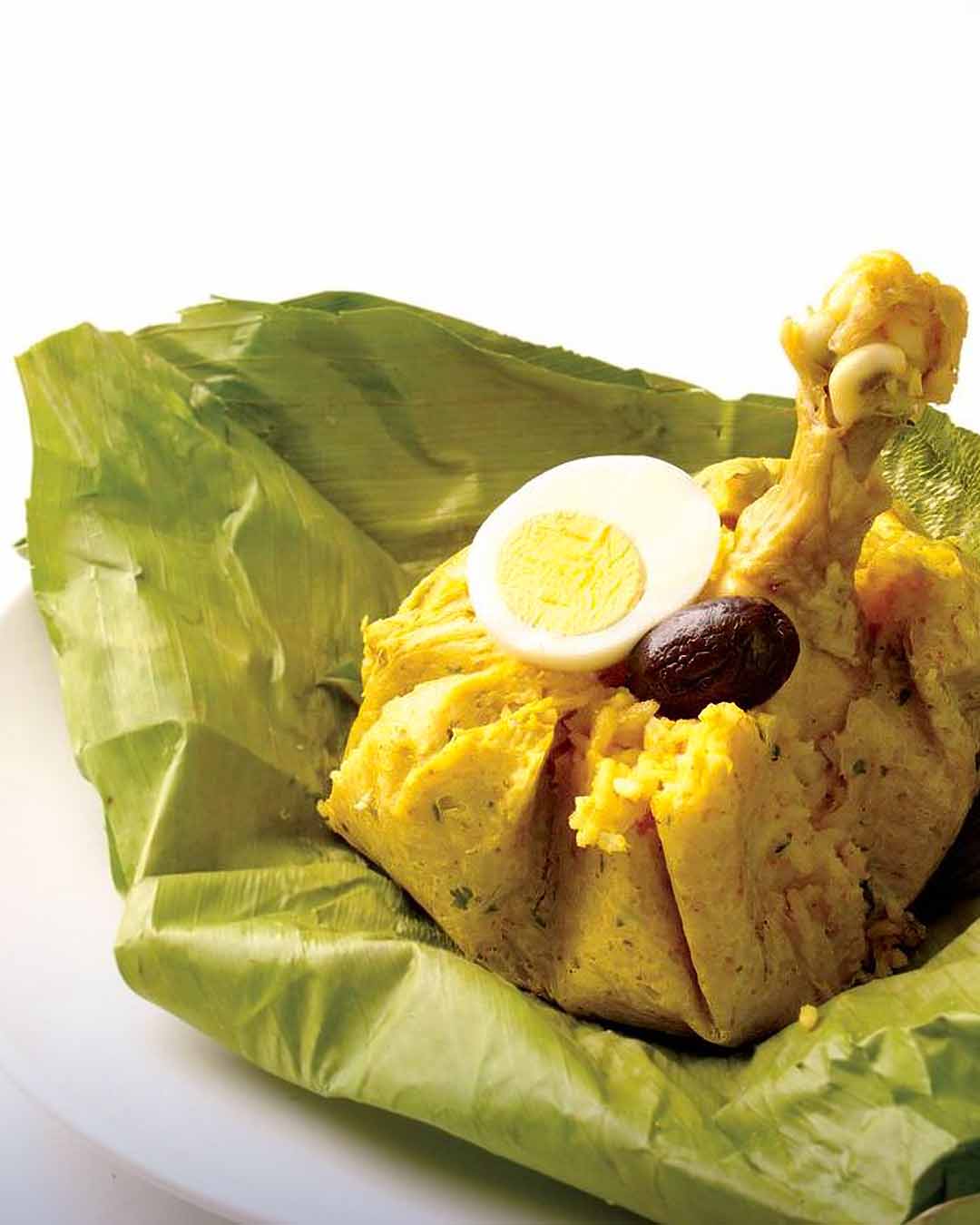
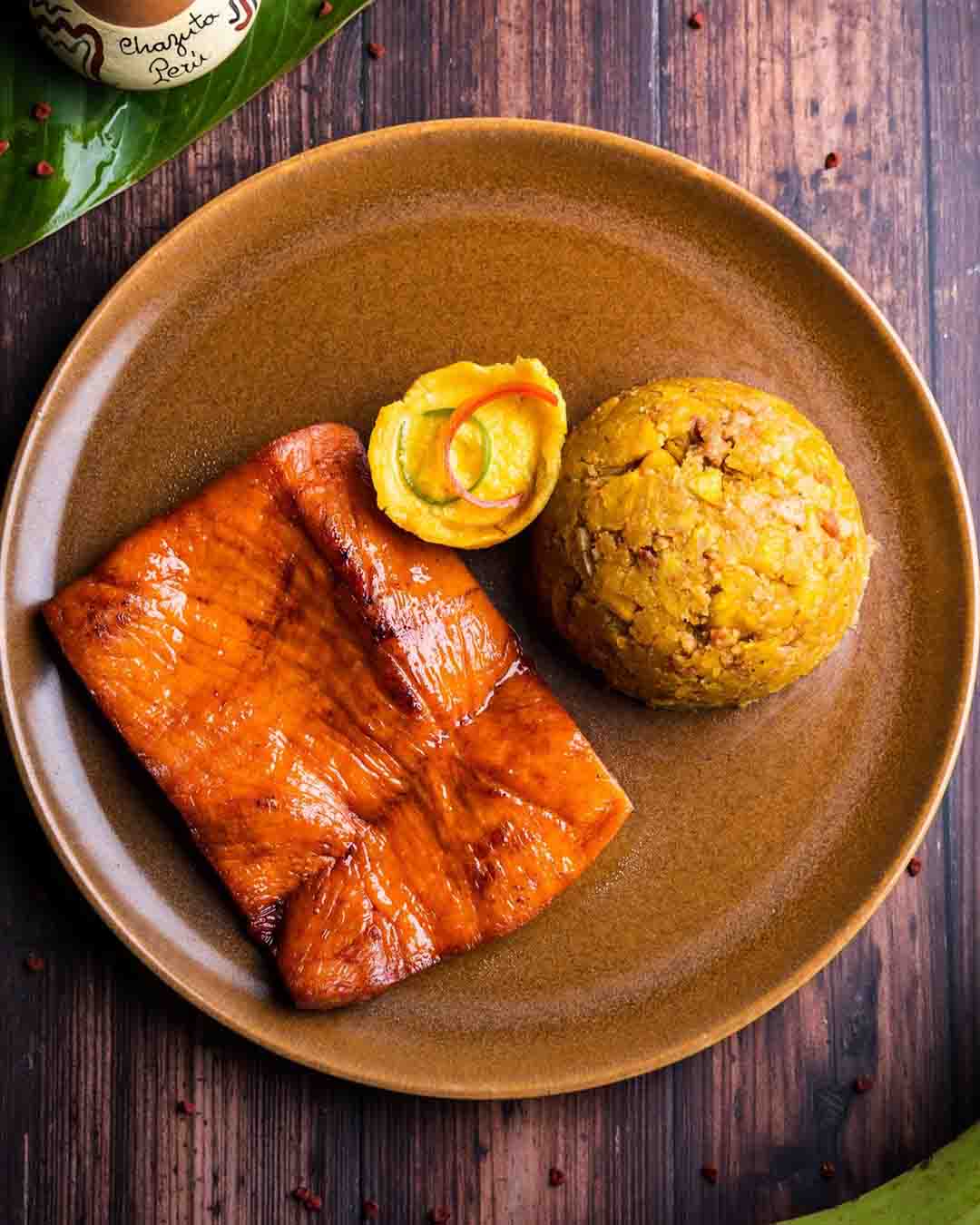
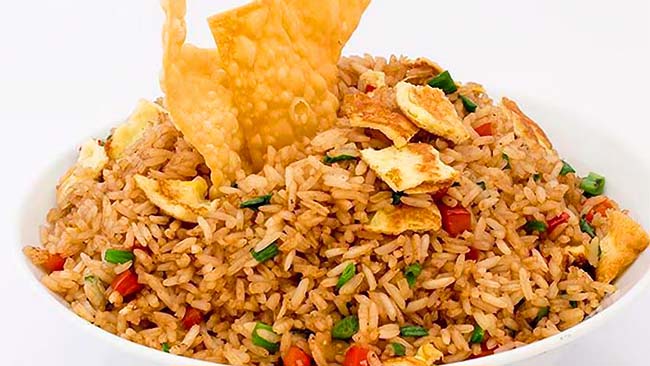
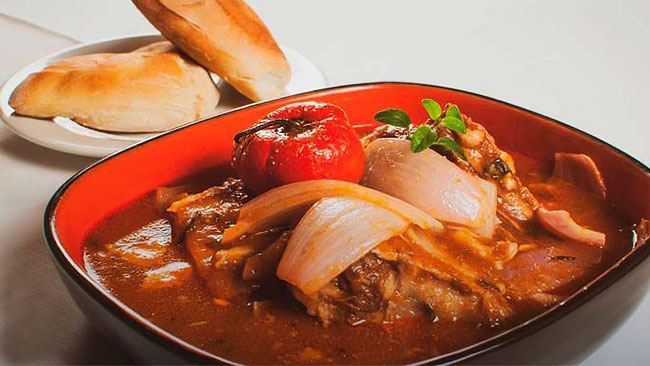
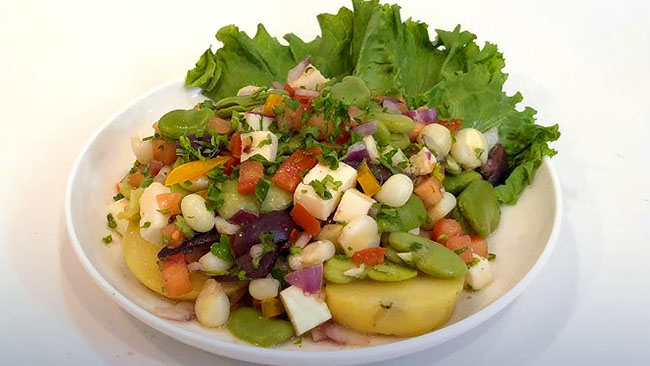
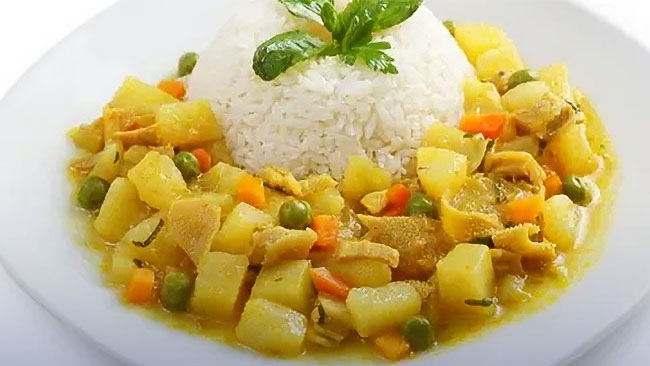
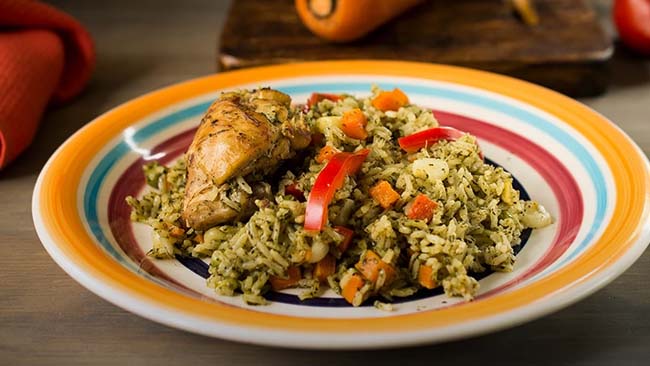
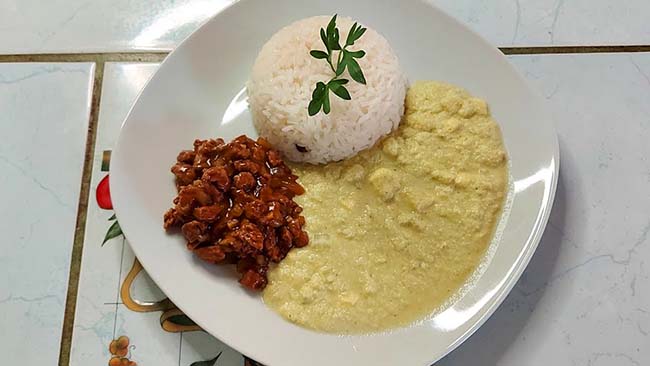
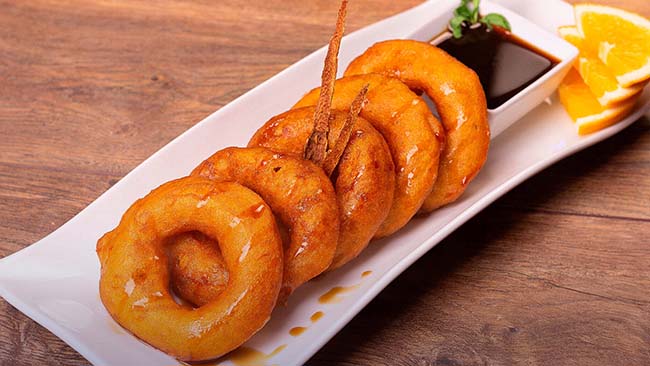
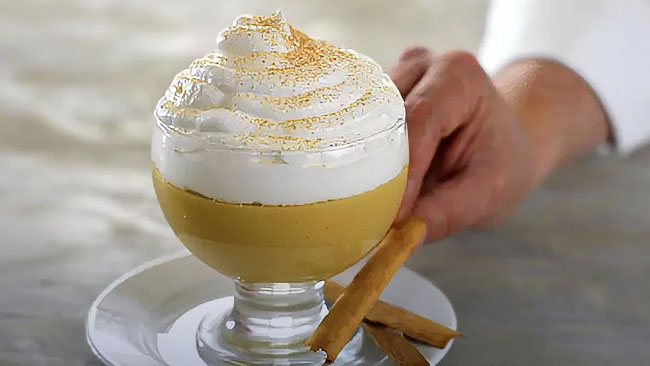
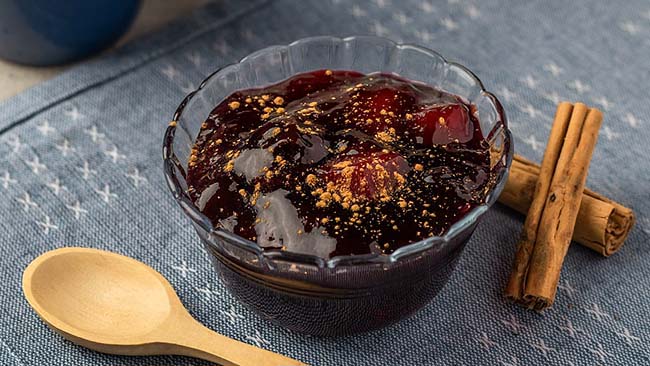
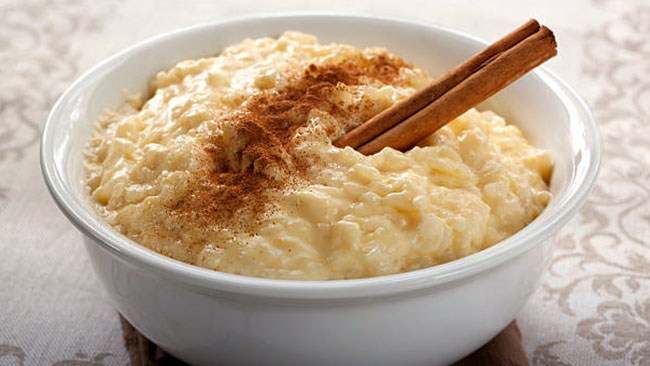
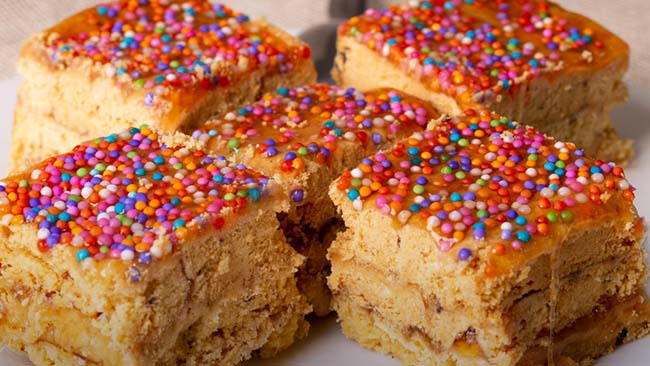
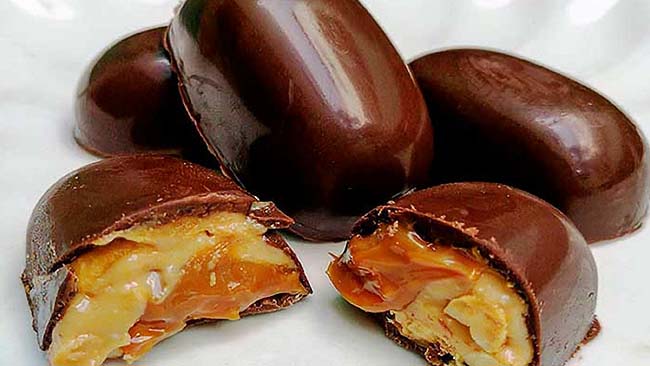
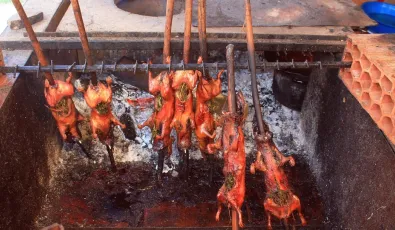
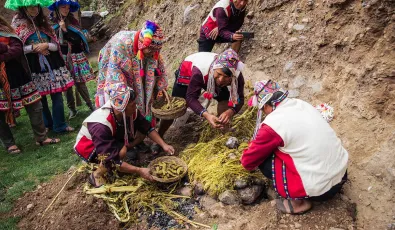


Add new comment